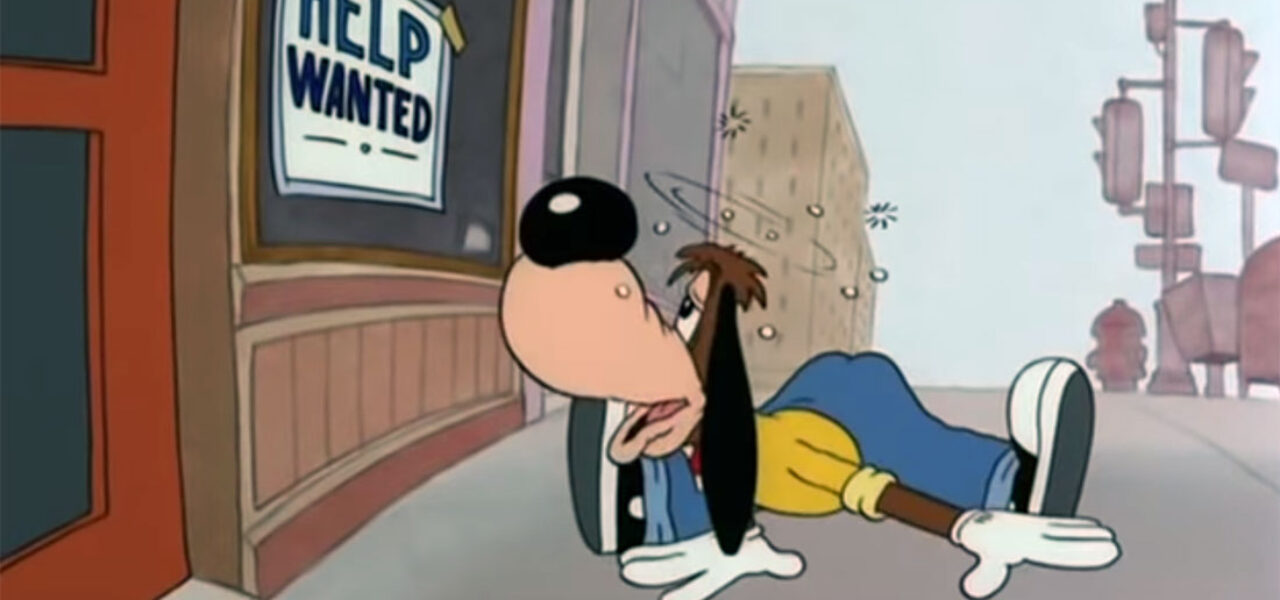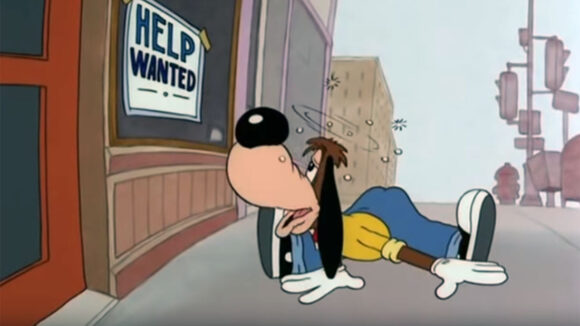

Animation Artists Reveal Salary Disparities With #AnimationPaidMe Hashtag
This weekend, a series of hashtags were created on Twitter, starting with #PublishingPaidMe and later #GameDevPaidMe, in which artists in their respective fields shared salary and earnings data to reveal pay disparities between white and black practitioners in the field.
On Sunday, the concept was extended to the animation realm with the #AnimationPaidMe and #MoGraphPaidMe hashtags. The hashtags are being used not only by animation artists in the United States, but also in Canada, Mexico, Europe, Australia, and Asia, and they’re revealing all kinds of pay disparities, particularly between regions.
Comparing salaries in animation has always been a sticky issue, and many studios actively discourage the practice; Sony Pictures Imageworks once warned prospective employees that it was “unprofessional” to compare salaries.
However, it is perfectly legal to discuss salaries in the United States if you are an employee of a company. The 1935 National Labor Relations Act explicitly grants permission to workers to “engage in concerted activities for the purpose of collective bargaining or other mutual aid or protection.” (It should be noted that U.S. law excludes independent contractors from this protection.) Under President Obama, laws were further strengthened through 2014’s “Non-Retaliation for Disclosure of Compensation Information” which stated:
“The contractor will not discharge or in any other manner discriminate against any employee or applicant for employment because such employee or applicant has inquired about, discussed, or disclosed the compensation of the employee or applicant or another employee or applicant.”
Still, many artists in the animation industry don’t compare salaries for fear that it can cause hurt feelings at a studio if one artist is known to be making more than their co-workers for doing the same job. Another possible reason for not sharing salary info is that some freelance artists charge different rates to different studios, and it can hurt an artist’s bargaining power if every studio knows your bottom rate. But ultimately, the biggest beneficiaries of pay secrecy are the studios themselves who are able to manipulate employees into earning less than they’re worth if no one knows who’s making what.
In the spirit of keeping the discussion going, below are some of the responses to the #AnimationPaidMe hashtag. Some caveats: there are at least 600,000 animation workers throughout the world, so even a few hundred responses doesn’t begin to adequately capture the salaries that are being made across the global industry. Also, bear in mind that living expenses vary in different cities and countries, so even though a salary may seem high in one city or country, the cost of living may be equally high. Finally, some of the salaries abroad are listed as monthly, whereas in the United States, we generally understand salaries to be weekly. Even with all these disclaimers, real numbers are rarely ever known to young artists entering the industry, and all of these artists should be applauded for being transparent about their earnings as it will help countless other people who are just beginning their animation career.
I used to hate discussing my salary. Now I think it's important to share, so people know if they're being fairly paid.#AnimationPaidMe
£19k – Junior (2014 – 2015)
£25 – 30k – Mid (2015 – 2018)
£33k – Senior (2019)Freelance (2019 – 2020)
£300 UK day rate
$550 US day rate— Rosie Phillpot (@rosiephillpot) June 8, 2020
#AnimationPaidMe Guadalajara
2016 Platypus studio (Storyboard artist, animatic, clean and color, riggs) 7,000 MX
2017 8,000 MX.
2019 Polar studio (character desing, Concept artist, storyboard artist, ilustrator, animator y background artist) 9,000 MX
Freelance 10,000 a 14,000.— Sedifráz (@Nardiuxpajariux) June 8, 2020
#animationpaidme part 2
(still per week, CAD, before taxes)
Titmouse, 2018, animation – $1100
Atomic Cartoons, 2019 to present – $1100In case the pattern's not clear, I've never been good at negotiating a fair pay for my work/experience.
— Chris MooMan Nyarady (@cartoonmoo) June 8, 2020
Nervous, but transparency is good. And I’m not in the industry anymore, so whatever. #AnimationPaidMe
2010, Jr Animator, CG, TV
$35k CAD2011, Jr Animator, Stop-Mo, Feature
$50k USD2013, Jr Animator, Stop-Mo, Feature
$60k USD2014-18, Animator, Stop-Mo, Feature
$75-95k USD— Kevin Parry (@kevinbparry) June 8, 2020
#AnimationPaidMe
Junior Animator – 500-600/week
Mid Animator – 42-63k, various studios
Senior – 75k
Lead – 85k
Animation Director – 90k – 105kJunior – low end mid = AUD
Everything else = CAD— Lex Sugden 🌺 (@AlexisDraws) June 8, 2020
#MographPaidMe
Dallas / Austin
2011 unpaid intern
2012 freelance: $10/H
2014 freelance: $15/HLos Angeles
2015 staff: $48k
2016 freelance: $35/HNew York City
2017 staff: $110k
2018 freelance: 99K (4 months off)
2019 freelance: 92K (6 months off)
2020 freelance: 54k (so far)— olive (@olliwelsh) June 8, 2020
Based in NYC
2008-2010 Staff LA – $32k year
2010-2016 Staff Neo – $82k year
2017 – $600/day FL (freelance) – $101k year
2018 – $650/day FL – $120k year (3 months off)
2019 – $700/day FL – $150k year (3 months off)
2020 – $700/day FL – 50k YTD (4 months off)#MographPaidMe— M’s and F’s.exe (@mrmikeflorio) June 8, 2020
At Bento Box Atlanta few years back, my wages were $700/week for BG paint. 10-11 hour days. I dont know if things have changed a lot, but a city in the South where a good chunk of the artists were black/POCs getting shit wages never sat well with me#AnimationPaidMe
— Pablo Leon (@ArtsyPabster) June 7, 2020
WAGE TRANSPARNCY!!!!
CN Intern 2009 $0 2010 $8.50/h
CN DIGITAL PA 2015-2018-$20/h
CRUNCHYROLL Freelance $500 a page
BENTO BOX "Trainee"- $1400/wk
BENTO BOX Boards-$2100/wk
HASBRO BOARDS-$2400/wk
TITMOUSE BOARDS- $2304.40/wk#AnimationPaidMe— Kaitrin Snodgrass (@KaitSnod) June 7, 2020
All as a storyboard artist for feature, weekly pay
2016 – Bron Animation – $900, $1000 CAD after one year
2017 – Cinesite Montreal – $1100 CAD
2018 – Cinesite Vancouver – $1500, $1800 CAD after contract negotiation
(1/2)
— Inuyasha stans rise up (@keely_propp) June 7, 2020
2012: unpaid mograph intern (privilege!)
2013-15: junior designer, $11/hr worked up to $15/hr
2015-16: contract designer/animator @ tech company, $40/hr
2016-18: freelance, $40/hr
2018-19: staff designer/animator, 75k with benefits
2019-20: freelance, $50/hr— zoë lotus (@zoolootoo) June 8, 2020
#AnimationPaidMe
Australia – All full time 2D animator, AUD before tax, also hours per week2015: $25.25h/40hrs ($1010pw)
2016: $27.5h/40hrs($1100pw)
2017: $30h/35hrs (incl 2.5hrs paid break) ($1050pw)
2018-19: $31.25h/32hrs ($1000pw)
2019-20: $32h/32.5hrs ($1040pw)— chicinlicin✨ (@chicinlicin) June 8, 2020
711$ per week when I started in 2016
Now 1090$ per week as a lead on a small show in Québec
It doesn’t seem like much when compared to LA salaries, but I’m pretty happy and living well
— Marco – Fabulous Comics (@PocoloTeam) June 8, 2020
2011-13(Playdom): $52k/yr USD
(Jr artist)2013-15(Nickelodeon): $1950/wk
(Strybrd)2015-16(DreamWorks tv): $2100/wk
(Strybrd)2016-17(Sony Pictures Animation):
$2350/wk (Feature Strybrd)2017(DW tv): $2100/wk
(Strybrd)2019-20(WB): $2400/wk
(Strybrd)#AnimationPaidMe— Iza (@Izaart) June 8, 2020
#AnimationPaidMe
pretty sure I'm not breaking any NDAs by saying I get paid $4000 per episode on Amphibia, which roughly falls every two weeks (although it obviously incentivises me to work quickly lol). This works out at around £1500 per week, which equates to £300 per day.— Joe Sparrow (@torpordust) June 8, 2020
Figured I'd do this
2016 – Titmouse $850 CAD/wk 2D builds
2017 – Slaphappy $950/wk
2018 – Atomic $1000/wk
2019 – Titmouse $1050/wk
2019 – Slaphappy $1100/wk2020 – Atomic $950/wk comp. Sucks I know but I took a compositing job so I'm basically a rookie again
— 🌚 Zell likes Animal Crossing 🌚 (@Zelarkian) June 8, 2020
#AnimationPaidMe Spain:
-2017 storyboard cleanup/lighting (freelance) 750€/month post-taxes
– 2019 Storyboard (pre-junior): 1000€/month
-2019 Background artist (freelance) 100€/day pre-taxes
-2020 Concept artist (freelance) 1300€/month
-2020 Concept artist 1000€/month— m.duritz (@DuritzM) June 8, 2020
All in CAD per week for Animator Positions in Vancouver BC.
Bardel (Hulu/Warner/Dreamworks)
2013 – $600
2014 – $900Titmouse (Dreamworks/Netflix/Amazon)
2015 – $1100
2016 – $1100
2017 – $1200
2018 – $1250Atomic (Netflix)
2019 – $1300— Nikko Nikko (@NikkoGuy) June 7, 2020
My first contract, 2014, I got like $650 p/w at Atomic Cartoons.
Bardel after that paid me per frame. So it varied.
2016 Titmouse gave me $1200
2018 DHX gave me $1100
2019 Atomic face me $1050All the while my rent kept going up every year. 🙃
— More like Wesley LOON! (I need to leave my house) (@Bouxn) June 8, 2020
#AnimationPaidMe CIS White British Male
Transparency helps us all2014 UK £26k Scene Build
2014 UK £28k Jr.Anim/Rig
2015 UK £32k Lead Rig
2016 UK £34k Rig
2016 IRE €45k Rig
2017 IRE €45k Scripter
2018 UK £41k Pipeline TD— chris carter (@chrishcarter) June 8, 2020
The numbers from the Philippines are quite low, especially considering that the country has a highly developed service studio industry that has been turning out high quality work since the 1980s. This artist explained how they made Php350 per background painting on Disney’s recent Ducktales series, which is US$7 per background:
BG Color*
2017 – Ducktales – Php350/BG
2017 – Oggy & Cockroaches – Php450/BG
2017 – Mr Magoo – Php450/BG
2018 – Transformers Cyberverse** – Php450/BG
2018 – Go Astroboy Go – Php350/BG*modifiers given on discretion of supervisor
**the show has primarily 3D BGs#AnimationPaidMe— karla circe 🐱 (@youkaishain) June 7, 2020
Other numbers from the Philippines also seem on the low side:
#AnimationPaidMe Might as well share some of the stuff I got paid for:
Legend Quest (2017): 180+ PHP (less than 4$)/ second
MLP:FiM (Season 7-8) (2017-2018): 200+ PHP (4$)/ second
Same price for helpin' out in Equestria Girls.On average I can do 20-40 seconds a week. (1/2)
— Dominic (@stupidyou3) June 8, 2020
Scene assembly work (camera angles, panning BG, character and prop placement, queue for movement) for the following:
-Le Sisters
-Little Astro Boy
-Equestria Girls
-The Hollows200-350 php per scene ($4-$7)
No wonder their studio was in hot water. https://t.co/ZejFdU8cPS
— Uncle Jebidiah (@jamesyguevarra) June 8, 2020
To add:
2018 – Big hero 6 series – P350/ $7 per BG
2018 – Ducktales s2 – P350 /$7 per BGRegardless of how many hours you painted it.#AnimationPaidMe https://t.co/vqhllg9YAK
— S a v y 🌈🚴♀️🎨 (@jellysavy) June 8, 2020
I’ve been a bg artist in an anime company for 10 years and I’d say you’re still lucky to have that price. We were being paid for 300 per bg for that one anime shounen show and 200 per bg for the shoujo one. Also we’re also to be the one to do the layout with 150 pesos 😂
— AubsNIN🔞 (@aubsnin) June 8, 2020
In addition to salary info, some artists participating in the hashtag have been sharing other advice and thoughts:
Feature animation storyboarding in California? Ask for $3k a week AT LEAST! You’re contributing story & character material to corporate machines that earn billions! On paper those Cars movies were more profitable than Star Wars because of the merch #AnimationPaidMe
— Matt Jones (@Jonezee99) June 8, 2020
Seeing talented people with college degrees on the #animationpaidme hashtag being paid <€25k per annum for full time work is sick. Unless you're in intern with no animation education or industry experience, this salary should not be acceptable.
— Melissa Malone (@merlerser) June 8, 2020
(Image at top: Still from “Get A Job” directed by Brad Caslor.)

.png)